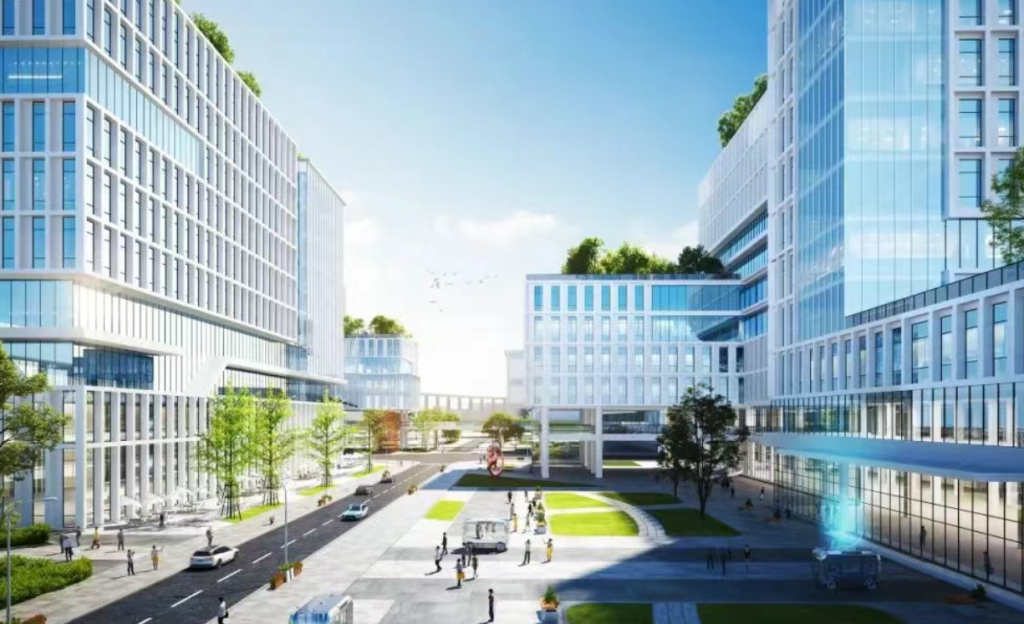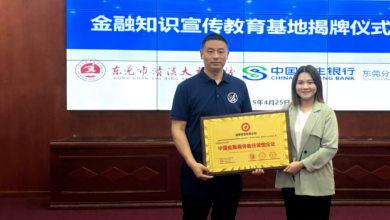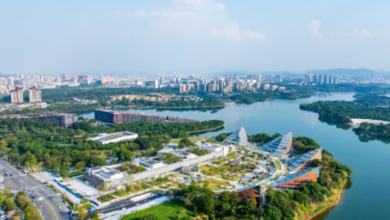Dongguan’s First “100-Billion Town” Embarks on “Second Entrepreneurship”: How to Recreate Legendary Success?


The Rise of Chang’an: From Manufacturing Hub to Economic Powerhouse
When I visited Chang’an Town in Dongguan last year, the vibrant energy of this economic powerhouse was palpable. In 2024, Chang’an made history by becoming Dongguan’s first town with GDP exceeding 100 billion yuan (about $14 billion), joining an elite group of only three towns in Guangdong province to achieve this milestone. This remarkable accomplishment didn’t happen overnight—it’s the culmination of decades of strategic development in electronics manufacturing, particularly as home to smartphone giants like OPPO and vivo.
The transformation I witnessed in Chang’an reflects Dongguan’s broader evolution from “factory of the world” to innovation hub. Walking through the industrial districts, you can still see the legacy of its manufacturing roots, but there’s an unmistakable shift toward higher-value production. Local officials proudly shared with me how they’ve been systematically replacing labor-intensive operations with automated production lines and R&D centers.
What impressed me most was how Chang’an has maintained its competitive edge while neighboring regions struggled with rising costs. The secret, as one factory manager explained to me, lies in continuous upgrading—both in terms of equipment and workforce skills. The town now boasts over 300 national high-tech enterprises, creating a formidable ecosystem that supports everything from component suppliers to final assembly.
Blueprint for “Second Entrepreneurship”: Dual Focus on Productivity and Livability
Chang’an’s leadership has framed their next phase as “second entrepreneurship,” an ambitious plan that personally strikes me as particularly visionary because it doesn’t just focus on economic metrics. The town aims to cultivate both “new quality productive forces” (innovative industrial capacity) and “new quality living forces” (enhanced quality of life)—a dual approach that recognizes talented workers today demand both career opportunities and lifestyle appeal.
From my observations, this strategy manifests in several concrete initiatives. The Shengan Industrial Center project along the Maozhou River exemplifies the production-side transformation. With its 280,000 square meter “robot industrial park” adopting a “1+2+N” industrial system (focusing on next-gen electronics as the core, supplemented by smart manufacturing and new energy), it promises to generate 10 billion yuan in annual output. I was particularly intrigued by how the design integrates workspaces with ecological elements, creating an environment that tech talent would find appealing.
On the living standards front, Chang’an has been investing heavily in cultural infrastructure. The recently opened OPPO Tower and the “Lotus Mountain” urban cultural space host everything from art exhibitions to skills training—a far cry from the cultural desert one might expect in an industrial town. During my visit, I attended a book festival at one of these venues and was amazed by the enthusiastic turnout of young professionals and families.
Industrial Upgrading in Action: Case Studies of Transformation
Let me share two compelling examples that demonstrate Chang’an’s industrial metamorphosis. The Shengan Industrial Center, a 1-billion-yuan project by town-owned enterprises, represents the government-led approach. When I toured the construction site, project manager Chen Manzhi explained how they’re accelerating progress to meet the 2027 completion target, with the underground engineering expected to finish this year. The center’s focus on robotics and supporting industries shows how Chang’an is moving up the value chain.
Equally impressive is the Xinhua Intelligent Manufacturing Industrial Center, a 1.45-billion-yuan community-level initiative by Xiagang neighborhood. What struck me was how local communities are actively participating in this transformation. The center’s planned 400,000 square meters of premium space will target cutting-edge sectors like humanoid robots and low-altitude economy—proof that innovation isn’t just happening at the top.
These projects are part of a larger pattern. Chang’an currently has 23 major projects underway, including vivo’s global headquarters and Huamao Intelligent Terminal facilities, forming what locals call the “new industrial axis” of AI and new energy vehicles. Having tracked industrial parks across the Pearl River Delta, I can confidently say Chang’an’s cluster effect is becoming increasingly competitive with better-known hubs like Shenzhen.
Redefining Urban Life: The “New Quality Living” Experiment
Chang’an’s “new quality living” concept, officially launched during April’s Lotus Book Festival, represents a bold reimagining of urban life in manufacturing centers. As literature critic Li Jingze noted during the event, this initiative taps into people’s aspirations for better lives while serving as an engine for urban development.
The town has creatively repurposed spaces like the新时代文明实践中心 (New Era Civilization Practice Center) into multifunctional venues. I personally enjoyed an evening paddleboarding event part of the “Green Chang’an” water sports series—activities that would surprise those who picture Dongguan as just factories and dormitories. The “Lotus Mountain·Guan” cultural space even won recognition as Guangdong’s “Most Beautiful New Public Cultural Space.”
What makes Chang’an’s approach stand out, in my experience, is how it balances highbrow and popular culture. While hosting prestigious calligraphy competitions like the “Nanya Award,” it also organizes community skill-sharing sessions. This inclusive strategy ensures both the highly-educated tech workforce and frontline workers find meaningful engagement—a lesson other industrial towns would do well to emulate.
Challenges and Opportunities Ahead
Having analyzed numerous industrial transformations, I believe Chang’an faces three key challenges in its “second entrepreneurship.” First, the competition for high-tech investment is fiercer than ever, with neighboring cities offering substantial incentives. Second, creating authentic cultural vibrancy takes time and can’t rely solely on infrastructure. Third, balancing rapid development with environmental sustainability requires careful planning.
However, the opportunities are equally significant. Chang’an’s established supply chains give it a leg up in advanced manufacturing. Its proximity to Shenzhen allows talent pooling while maintaining lower costs. Most importantly, the town’s leadership has shown remarkable consistency in executing long-term plans—a rarity in China’s often rotation-heavy official system.
From my discussions with local entrepreneurs, the most exciting prospects lie in cross-industry applications. One robotics startup founder explained how Chang’an’s electronics expertise gives them unique advantages in developing robotic sensors. Another highlighted how traditional manufacturers are pivoting to medical devices—a sector with huge potential given China’s aging population.
Conclusion: A Model for China’s Industrial Towns
Chang’an’s journey offers valuable lessons for industrial towns nationwide. Its “second entrepreneurship” succeeds by refusing to choose between economic growth and quality of life—recognizing they’re mutually reinforcing. The strategic focus on both cutting-edge production and cultural development creates a virtuous cycle that attracts and retains talent.
As the town works toward its vision of “both new quality productive forces and new quality living forces,” it’s rewriting the playbook for post-industrial transformation. While challenges remain, Chang’an’s blend of ambitious planning, community engagement, and adaptive execution positions it well to recreate—and potentially surpass—its first legendary success. For observers of China’s urbanization, this thousand-billion-yuan town deserves close attention in the coming years.





